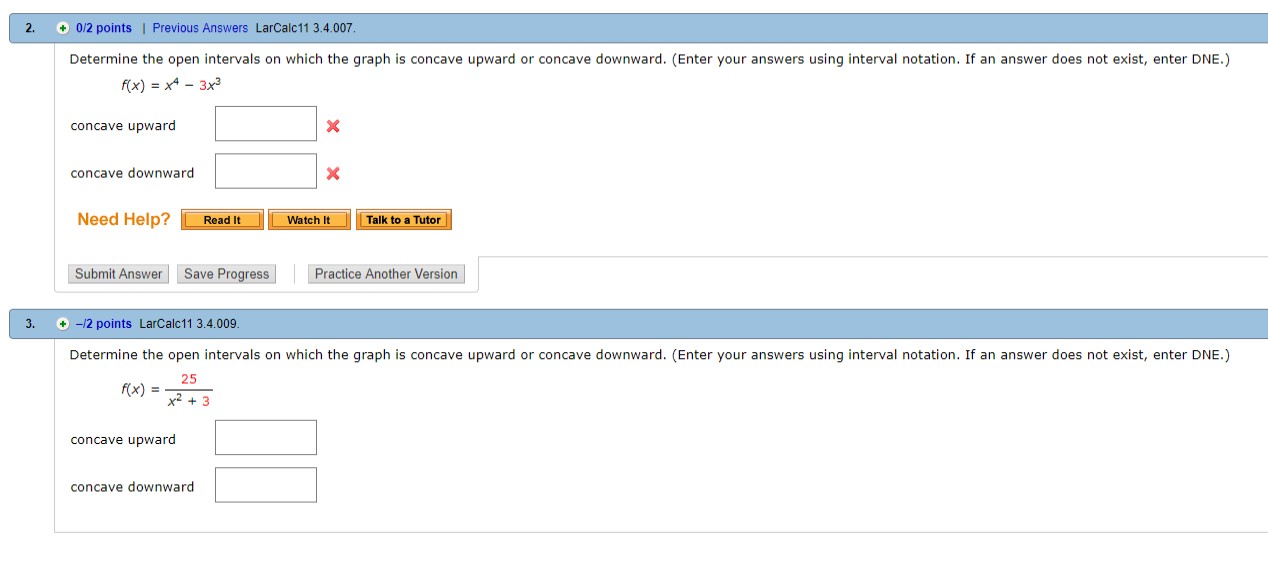Find the second derivative:
#f'(x)=4x^3-9x^2#
#f''(x)=12x^2-18x#
Set #f''(x)# equal to #0# and solve for #x# and determine for which values of #x# #f''(x)# doesn't exist:
#12x^2-18x=0#
#f''(x)# exists for all values of #x#; a polynomial is always continuous.
Simplify and solve for #x:#
#6x(2x-3)=0#
#x=0, x=3/2#
The domain of #f(x)# is #(-∞,∞)#. Let's split up the domain of #f(x)# around these #x# values we've found:
#(-∞,0),(0,3/2),(3/2,∞)#
And determine whether #f''(x)# is positive or negative in each of these intervals. If #f''(x)>0# on an interval, #f(x)# is concave up on that interval. If #f''(x)<0# on an interval, #f(x)# is concave down on that interval.
#(-∞,0):#
#f''(-1)=12+18>0#
Concave up on #(-∞,0)#
#(0,3/2):#
#f''(1)=12-18<0#
Concave down on #(0,3/2)#
#(3/2,∞):#
#f''(2)=48-36>0#
Concave up on #(3/2, ∞)#


